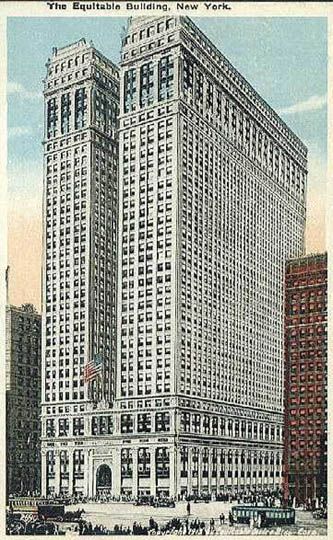
People living close together in cities is the most efficient way to run a society, because population density is the key to offering services and building social ties. But there's a limit to the benefits of density. City planning regulations are the reason that New York and other cities do not resemble Kowloon Walled City, an organic experiment in density that was demolished in 1993. New York saw the future looming, like a massive skyscraper, in 1915.
The Equitable Building is sometimes cited as the proverbial straw that broke the camel’s back, but this structure was more accurately the canary in the coal mine, signaling rather than leading to the end of space-maximizing skyscrapers — structures filling out their lots and rising straight up into the air. Completed in 1915, it was the latest in a growing number of such structures, with two sections cut out (making its plan view into an ‘H’ shape ) to allow some daylight access for central occupants of this dense architecture.
This structure and buildings like it were relatively unconstrained at the time, leading developers to take full advantage of every square inch. As they grew taller, however, more and more citizens expressed concern about the shadows they cast on adjacent structures and the ways in which they loomed up over and choked off the streets below.
The result was New York’s 1916 Zoning Resolution, the first such law in the US. Every skyscraper that came afterward had to be designed to let sunlight in to people on the streets. Read how that works at 99% Invisible. -via Digg
(Image credit: Antonio Knauth)





